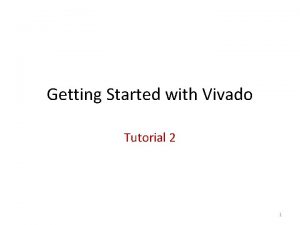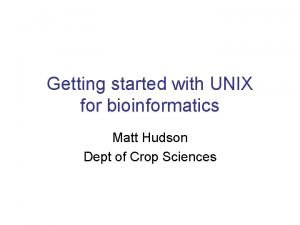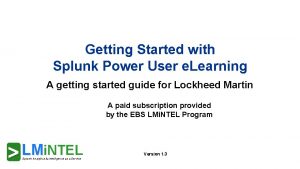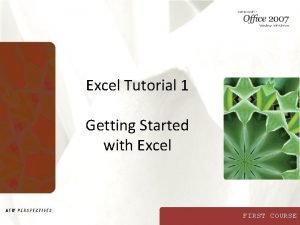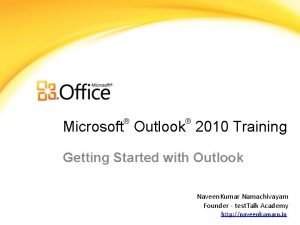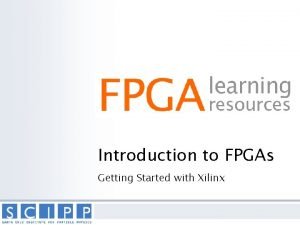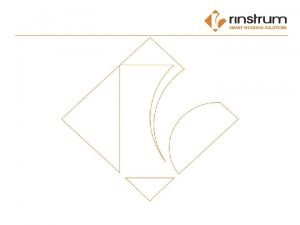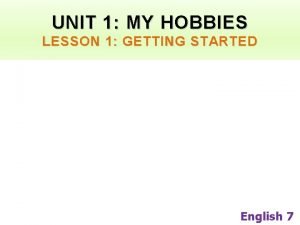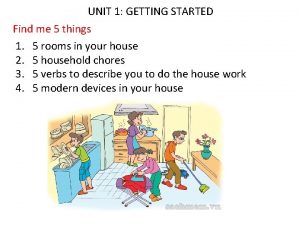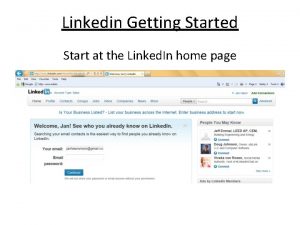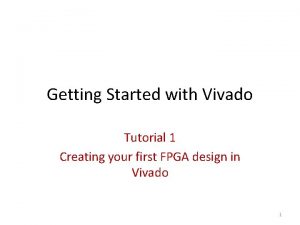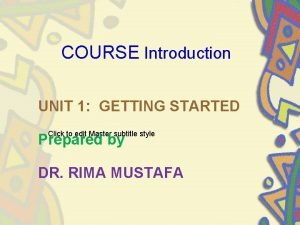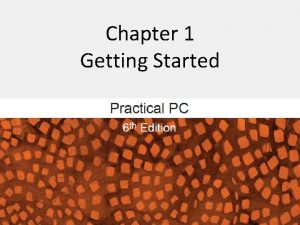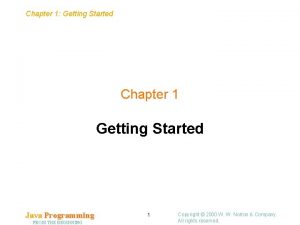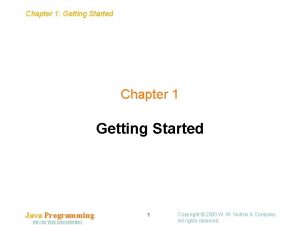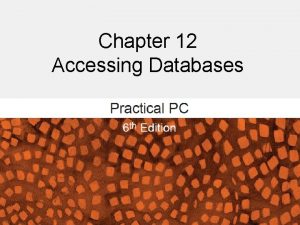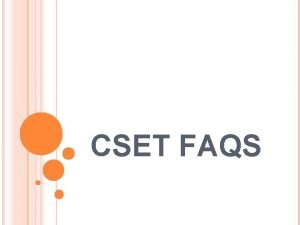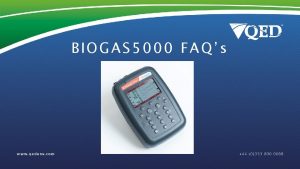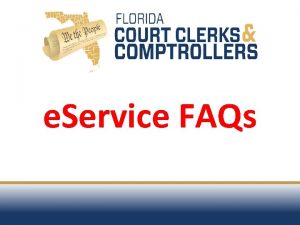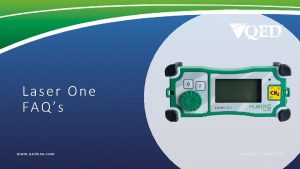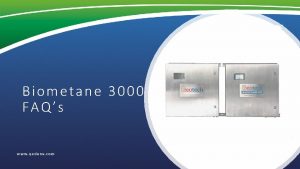Chapter 11 Working with Spreadsheets Getting Started FAQs



















- Slides: 19

Chapter 11 Working with Spreadsheets

Getting Started • FAQs: – What’s a spreadsheet? – How do I create a worksheet? – What if I don’t know the right formula? – How do I know whether worksheet results are accurate? – How do I create graphs? Practical PC 6 th Edition Chapter 11 2

What’s a spreadsheet? • A spreadsheet is a tool for working with numbers – Arranged in a grid of columns and rows forming cells – Cells hold labels, numbers, and formulas • Spreadsheet software allows you to create electronic spreadsheets – Easy to edit, print, save, and post on Web – Often referred to as a worksheet – Formulas are used to perform calculations – You can use the worksheet to examine “what-if” scenarios Practical PC 6 th Edition Chapter 11 3

What’s a spreadsheet? Practical PC 6 th Edition Chapter 11 4

How do I create a worksheet? • To create a worksheet: – Begin by entering a title and labels – Then enter the numbers, or values – Finally, enter formulas • Formulas specify how to calculate worksheet cells • A cell reference is the column and row location of a cell, such as B 2 • You can format your worksheet to make it more attractive with different fonts, cell colors, and data alignment Practical PC 6 th Edition Chapter 11 5

How do I create a worksheet? Practical PC 6 th Edition Chapter 11 6

What if I don’t know the right formula? • Spreadsheet software includes built-in functions – Functions are predefined formulas – Handy functions include AVERAGE and SUM – To use a function, select it from the function list and select the cells that contain arguments • An argument is a value or cell reference that a function uses as a basis for a calculation Practical PC 6 th Edition Chapter 11 7

What if I don’t know the right formula? Practical PC 6 th Edition Chapter 11 8

How do I know whether worksheet results are accurate? • The worksheet author is responsible for its accuracy – Test and verify the results using a handheld calculator • Common errors: – Typographical error – Incorrect formula – Order for the calculations in a formula is wrong – Cell range specified is incorrect – Wrong cells are specified as arguments in a function Practical PC 6 th Edition Chapter 11 9

How do I know whether worksheet results are accurate? Practical PC 6 th Edition Chapter 11 10

How do I create graphs? • A graph is based on the data in a worksheet – Graphs automatically reflect the change you make in the worksheet – Data is contained in ranges, which are a series of cells • You can create many types of graphs including bar, line, pie, column, scatter, area, doughnut, and high-low-close • Creating a chart: – Plan your chart by identifying your data and chart type – Activate the Chart Wizard for step-by-step directions – Use menu options to change the chart’s appearance Practical PC 6 th Edition Chapter 11 11

How do I create graphs? Practical PC 6 th Edition Chapter 11 12

Hardware: Display devices • A computer display device is usually classified as an output device – An LCD (liquid crystal display) produces on-screen images by manipulating light within a layer of liquid crystal cells • Compact in size and lightweight – LED (light emitting diode) technology is used commonly as backlighting for LCD panels • Also can be used to form screen images Practical PC 6 th Edition Chapter 11 13

Hardware: Display devices Practical PC 6 th Edition Chapter 11 14

Hardware: Display devices • A graphics card typically contains a graphics processing unit, which executes graphics commands • Monitors connect to computers using VGA, DVI, or HDMI ports Practical PC 6 th Edition Chapter 11 15

Hardware: Display devices • Each dot of light on a computer screen is called a pixel • The number of pixels is referred to as screen resolution Practical PC 6 th Edition Chapter 11 16

Hardware: Display devices • Ergonomics is the science of configuring jobs, equipment, and workplaces with regard to worker health and safety • Check the following factors that contribute to ergonomic viewing: – Brightness and contrast – Viewing angle – Response time Practical PC 6 th Edition Chapter 11 17

Hardware: Display devices Practical PC 6 th Edition Chapter 11 18

Who’s to blame for faulty software? • What do you think? – Do you usually read the EULA that’s supplied with your software? – Should software publishers be held responsible for errors that result from errors, or bugs, in the software code? – Should software publishers be held responsible if user errors result in business or personal losses? Practical PC 6 th Edition Chapter 11 19
 The secret to getting ahead is getting started
The secret to getting ahead is getting started Event faqs
Event faqs Getting started with vivado ip integrator
Getting started with vivado ip integrator Getting started with unix
Getting started with unix Splunk free training
Splunk free training Rancher getting started
Rancher getting started Getting started with excel
Getting started with excel Getting started with microsoft outlook learning
Getting started with microsoft outlook learning Getting started with xilinx fpga
Getting started with xilinx fpga Lua getting started
Lua getting started Unit 1 hobbies
Unit 1 hobbies Unit 1 getting started
Unit 1 getting started Find these things in unit 1
Find these things in unit 1 Linkedin getting started
Linkedin getting started Getting started with vivado
Getting started with vivado Perl read_file
Perl read_file Getting started with ft8
Getting started with ft8 English 9 unit 3 getting started
English 9 unit 3 getting started Unit 1 getting started
Unit 1 getting started Poll everywhere register
Poll everywhere register


